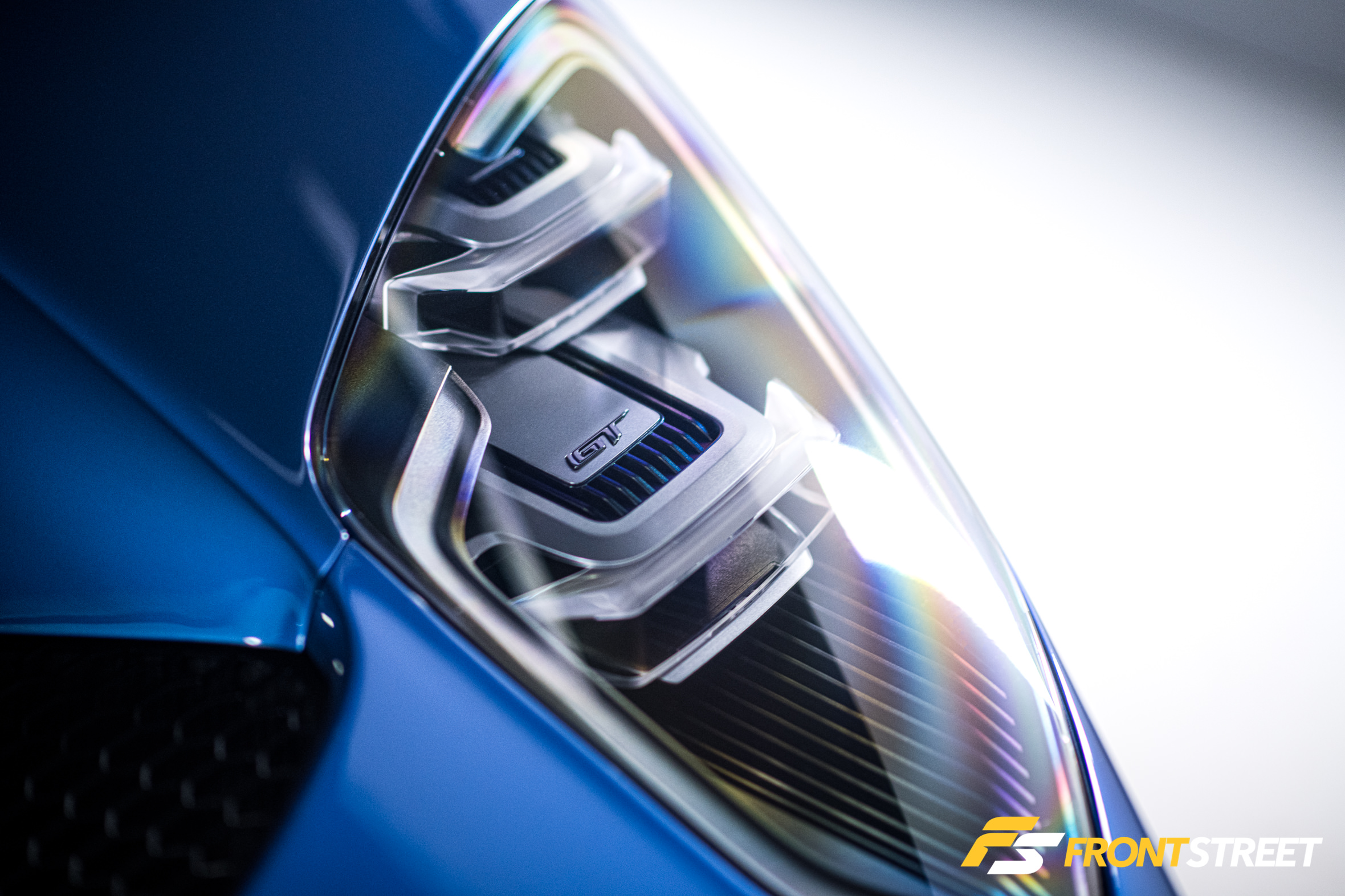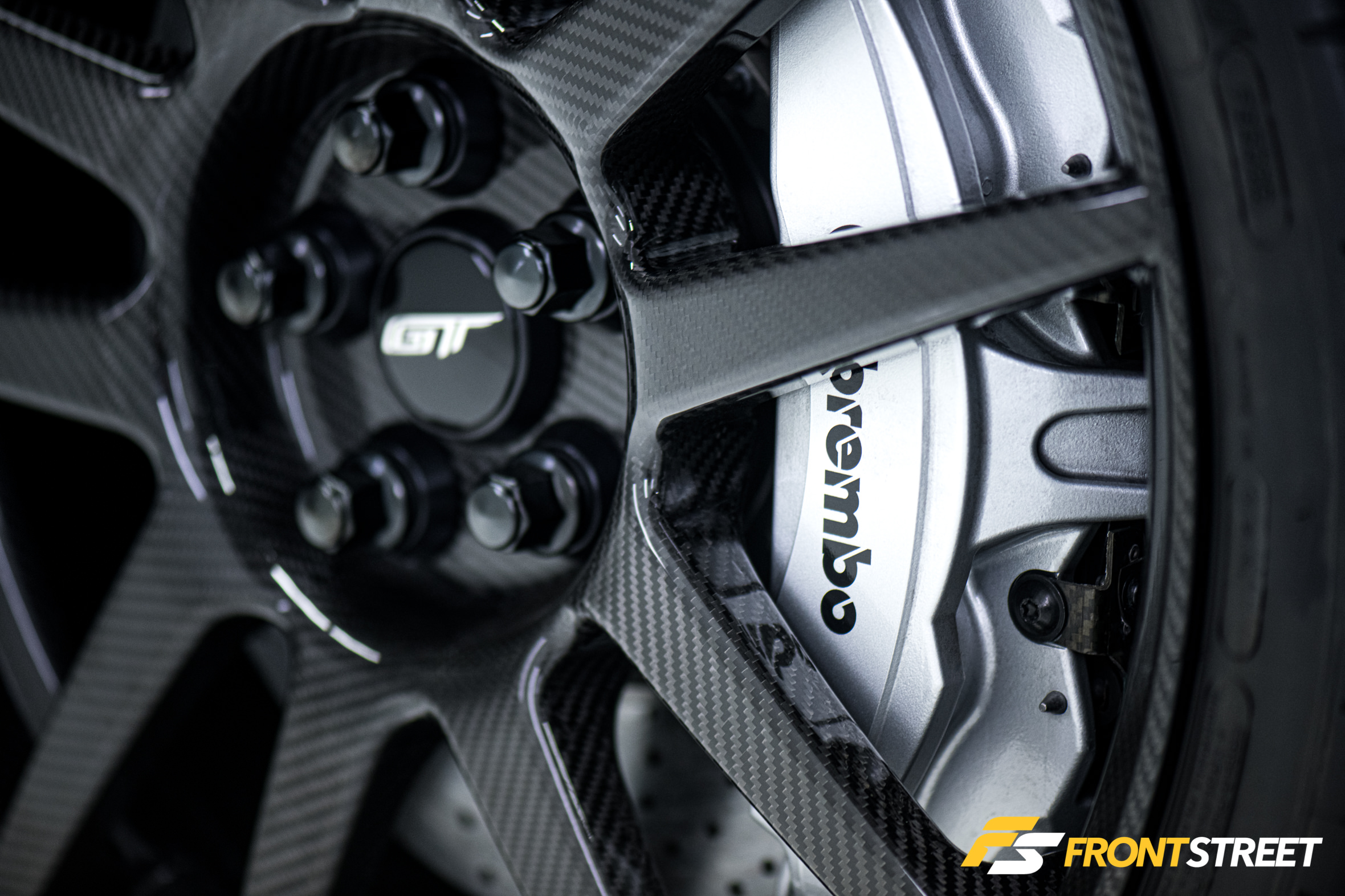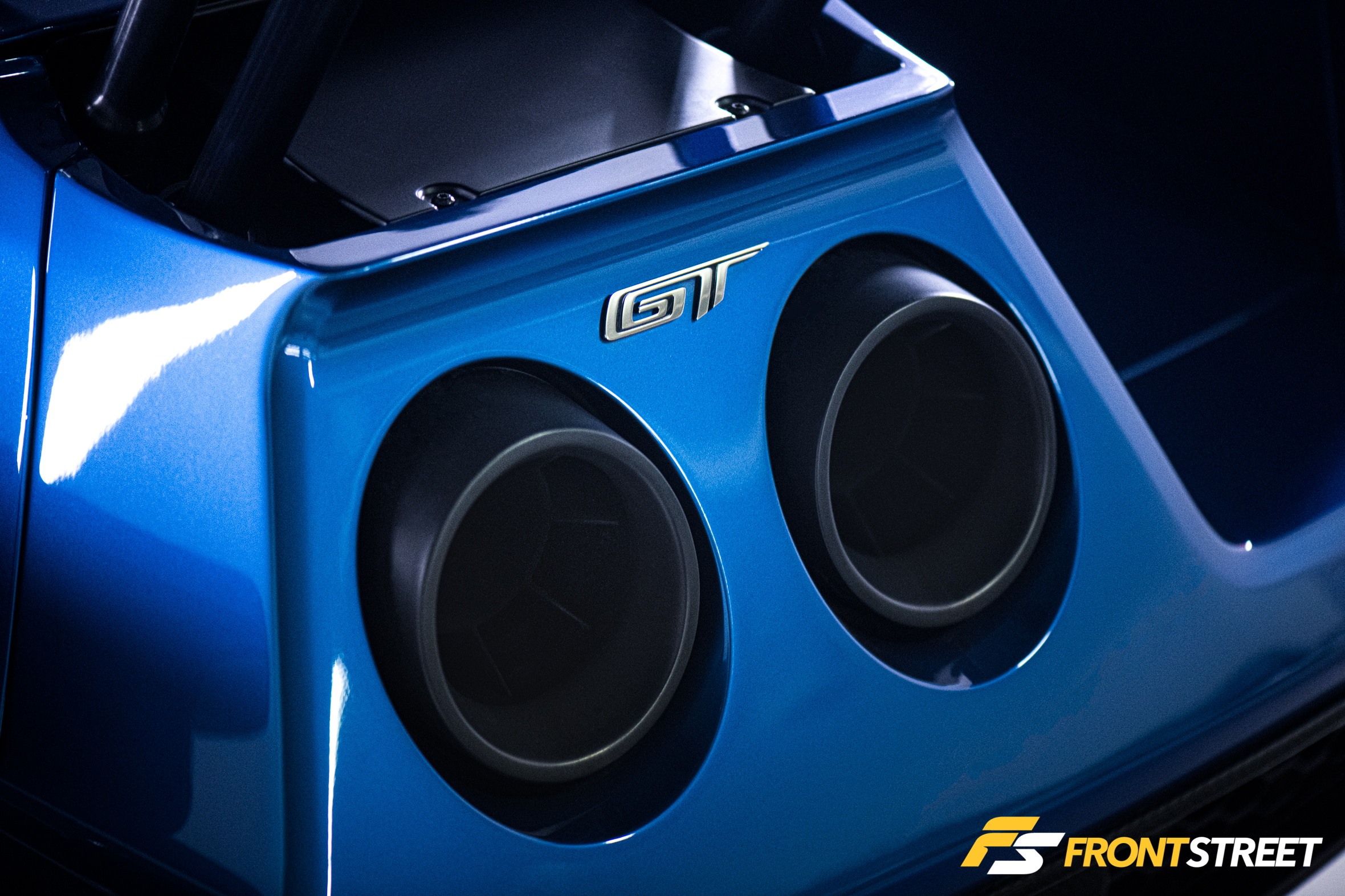Photography by Dave Tormey
The Ford GT. Just saying the name has a certain amount of presence to it. The history embedded in the namesake reaches back several decades to the ‘60s when Ford campaigned the original iteration—the GT40—in endurance motorsport competition with one goal in mind: to win at Le Mans against Ferrari. The GT referenced the high-speed, endurance-oriented Grand Touring design, while the 40 was included to describe the vehicle’s 40-inch height. It recorded Le Mans victories over four consecutive years from ’66–’69 and established itself as a meaningful piece of Ford history.
During the mid-‘00s, Ford paid homage to these legendary GT40 cars, by launching their new supercar dubbed the Ford GT. The initial demand skyrocketed, but after a few years production was halted, and hundreds of cars were left unsold. The origins for the Ford GT40 were in motorsport, however, this new stab at the name failed to represent the brand with any factory-backed attempts at racing victory. Only private race teams campaigned these cars, none of which recorded particularly successful results. This was an unfortunate symbol of the new Ford GT project as a whole.


Until 2015, that is, when Ford started fresh with a semi-new goal in mind: to win the 24 Hours of Le Mans again exactly 50 years after their first checkered flag at the event. Victory in the famed showcase would shape the culture surrounding the production car, which was deemed more important this time around. This was less of a production car, and more of a racecar with production variants to meet homologation standards—our favorite kind of car. These new iterations were manufactured at Ford partner Multimatic Niche Vehicles in Markham, Ontario, Canada, and pressed into service with the factory backing that was missing ten years earlier.
In 2016, Ford accomplished exactly what they set out to do. The new-style No. 68 Ford GT of Ford Chip Ganassi Racing finished first in class at the 24 Hours of Le Mans. And so the history books were written…


So let’s get into what we have here today. This new version of the Ford GT supercar was dropped off at nearby paint correction specialist Oakes Detail in West Chester, PA, for clear film work. Our friend Dave Tormey stopped by to see the car and take a few pictures. Once we saw said pictures, we knew it needed to be shown to our readers.


Nick Oakes of Oakes Detail may be young, but he is certainly not new to the detailing-sphere! He started professionally detailing on a Subaru STI over a decade ago in his residential driveway. He continued polishing his craft and gained a large following of repeat customers.
“The first exotic vehicle I worked on as a company was a Ferrari 512BBi matching bottom, Euro-spec. The owner then swapped that out with his original paint survivor 1963 Jaguar E-Type. And I still take care of both cars today 11 years later,” says Oakes.
After detailing a few Ferraris in his parents’ driveway, he decided a business location was needed and he soon moved into a building nearby in 2008. From there he continued his trajectory upward, adding employees as needed and moving between four different facilities over time. Oakes now pushes work out of a new 12,000 square-foot shop in West Chester, PA, with the option to expand into the remaining 40,000 square-feet. This shop is the company’s permanent residence with storage for 20 vehicles year-round and an additional 20-25 during the winter months, along with two purpose-built clean rooms with recessed lifts and underground lines to ensure they have zero clearance or width issues for the vehicles they work on. The lighting setups are even varied between each room as one is for paint correction, the other strictly for paint protection film installs.
He has established himself not only as an authority in the detailing/paint correction business, but in the application of window tint, protective films, and Modesta ceramic coatings, too. He also specializes in collection management, climate-controlled vehicle storage, and even the enclosed transport of customer vehicles. Oakes recently completed a full workup on a new Lamborghini Aventador SVJ, which required the perfect placement of more than 130 intricate pieces of protective film—for reference, the average car only uses about 20.


Now that you know a little more about where the car was, I ask, what’s not to love about this Liquid Blue-colored Ford GT? While the mid-‘00s version paid more direct homage to the styling cues from the ‘60s, this body style screams present-day aggression and was crafted for performance.

“The Ford GT has so many incredible details to it, from the headlights to the carbon fiber brake caliper brackets. An incredibly wild looking vehicle in person. Pictures, like most hypercars, don’t do this car justice in my opinion,” says Oakes.
Let’s begin with the aero touches, or should we call them punches? The most prevalent feature in the car’s design is the large gaping tunnels inside what Ford calls the buttresses—the company’s name for the connection to the wide hips behind the doors. Well, at least they seem to start there, but as you examine a little closer these openings follow the stream of air coming directly off of the front end.


As air passes underneath the front bumper, it’s either blasted through a clever duct at the bottom of the door or circulates out the hood and around the very petite cockpit. Ford designed the passenger compartment in smaller proportions just to aid the aerodynamic benefits of the car. Once the air passes around the slender cockpit area it is routed through one of three passages.

The first option is the tunnels, which direct the flowing air under the deployable rear wing and out the back to decrease drag and increase downforce loads, which in turn provide a massive boost in grip levels. The second option transfers the air through smaller openings and into the car’s engine for the intake. While the third option is my favorite—hidden inside the furthest section away from the car in the rear fenders are radiators, which provide the all-important cooling to the car’s powerplant.

Shielded behind a combination of glossy carbon fiber venting, and lightweight thin glass, the mid-ship mounted 3.5-liter twin-turbocharged EcoBoost V6 engine generates an astounding 647 horsepower and 550 lb-ft of torque. However, having two turbochargers and a six-cylinder engine mounted inside the body of the car is sure to generate some heat, so how do you lower those temperatures in that engine bay?

You’ll notice a large opening situated in the middle of the exceptionally designed taillights, this is Ford’s solution for emptying the hot air out of the bay. Ducts from the engine compartment flow debilitating hot air directly out of the back of the car by way of these taillight holes. It’s an ingenious solution and another favorite of mine on the car.


Carbon fiber makes up the majority of this car, not only on the outside but deep inside as well. The car itself is built around a carbon fiber tub, in which the dashboard is actually a structural piece of its construction. Because of this Ford extended the use of lightweight materials and carbon fiber throughout the reaches of the entire design. Carbon fiber is the construction material of the sleek rearview mirrors on each side. The mounting of which are actually asymmetrical in different locations on each door to aid in driver vision.




While lightweight titanium is used in pieces like the vehicle’s exhaust and lug nuts, Ford also stretched carbon fiber out into the stylish and functional valences surrounding the edges, and even the wheel package. That’s right, the wheels and brakes are actually made of carbon fiber—not that anything less is expected on a car with an MSRP over $500,000.

I think it says a lot about the Ford GT’s design that it has been on the market for a few years, and its details can still garner this fascination. Ford recently released the track-only Ford GT MKII with an all-new larger aero package, which generates more than 400 percent more downforce than this road-going version you see. Transferring the winning aerodynamic formula of the current endurance racecars into a race-only production car sounds like a recipe for success, but with a price tag over $1.2M, we’re just hoping we get to see one up close in our lifetime.
We’d like to thank Nick Oakes from Oakes Detail for allowing us to feature the car, and hope we can utilize his award-winning expertise in paint correction to showcase more stunning vehicles for all of you to view in the future.
[table id=10 /]









